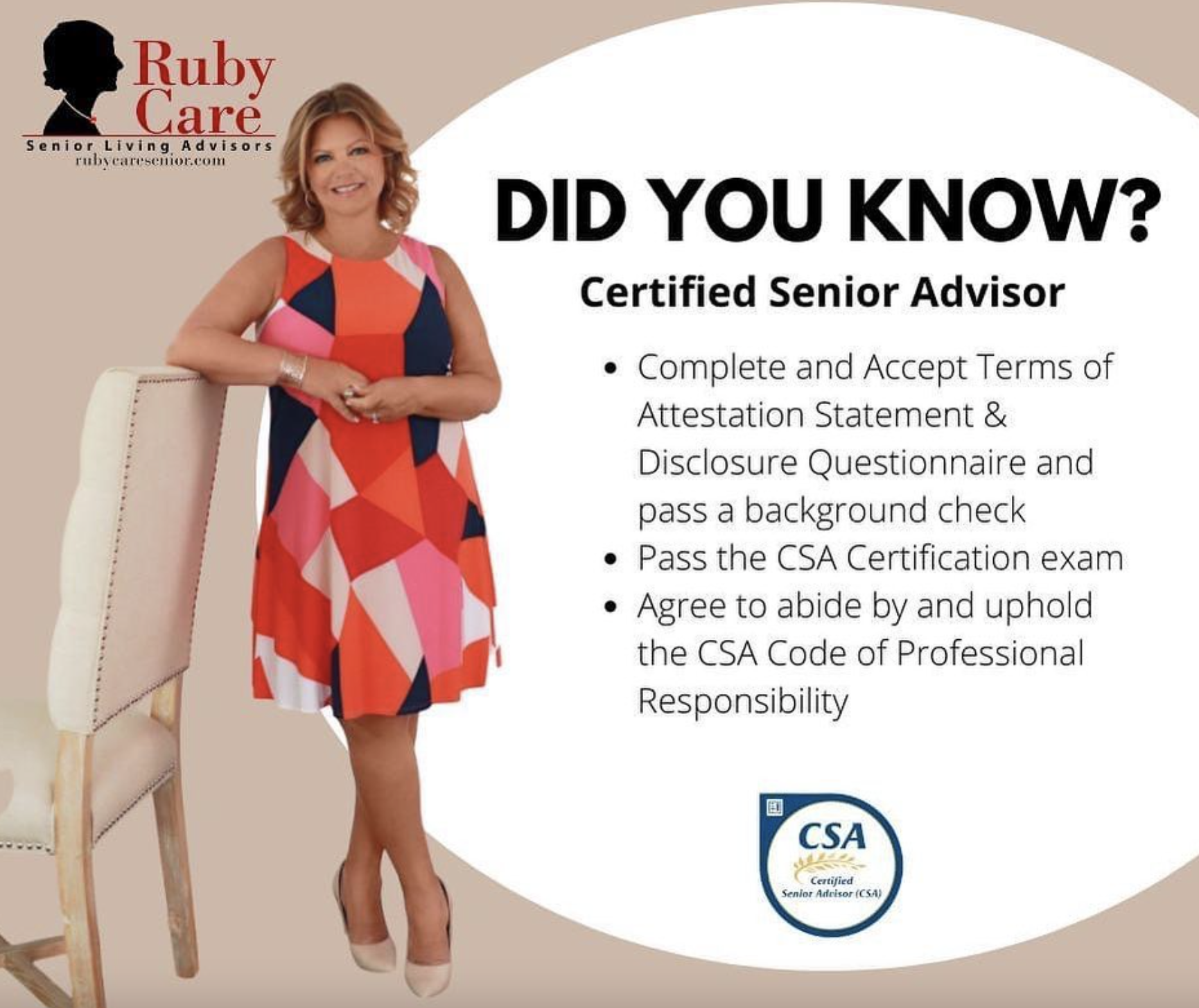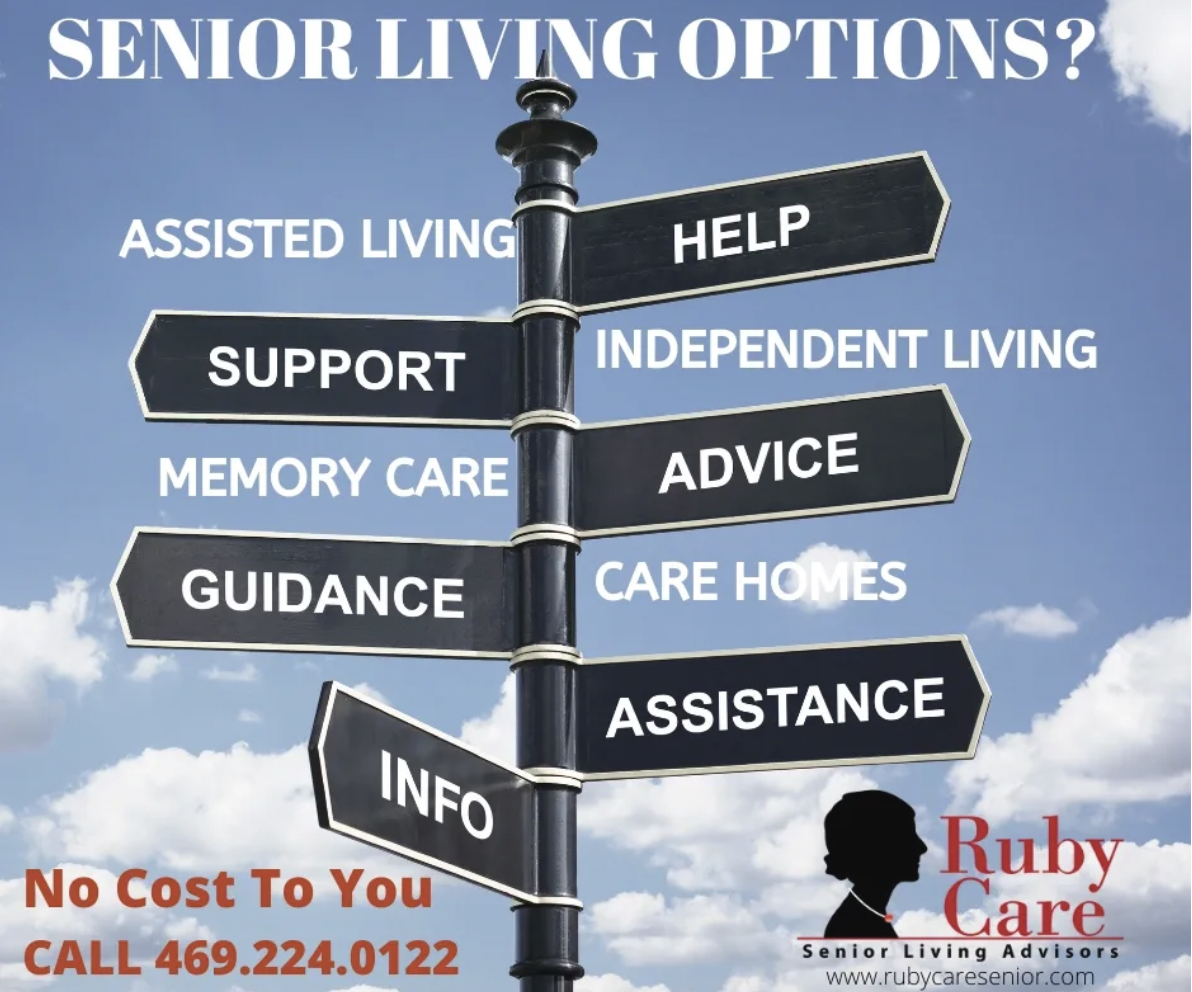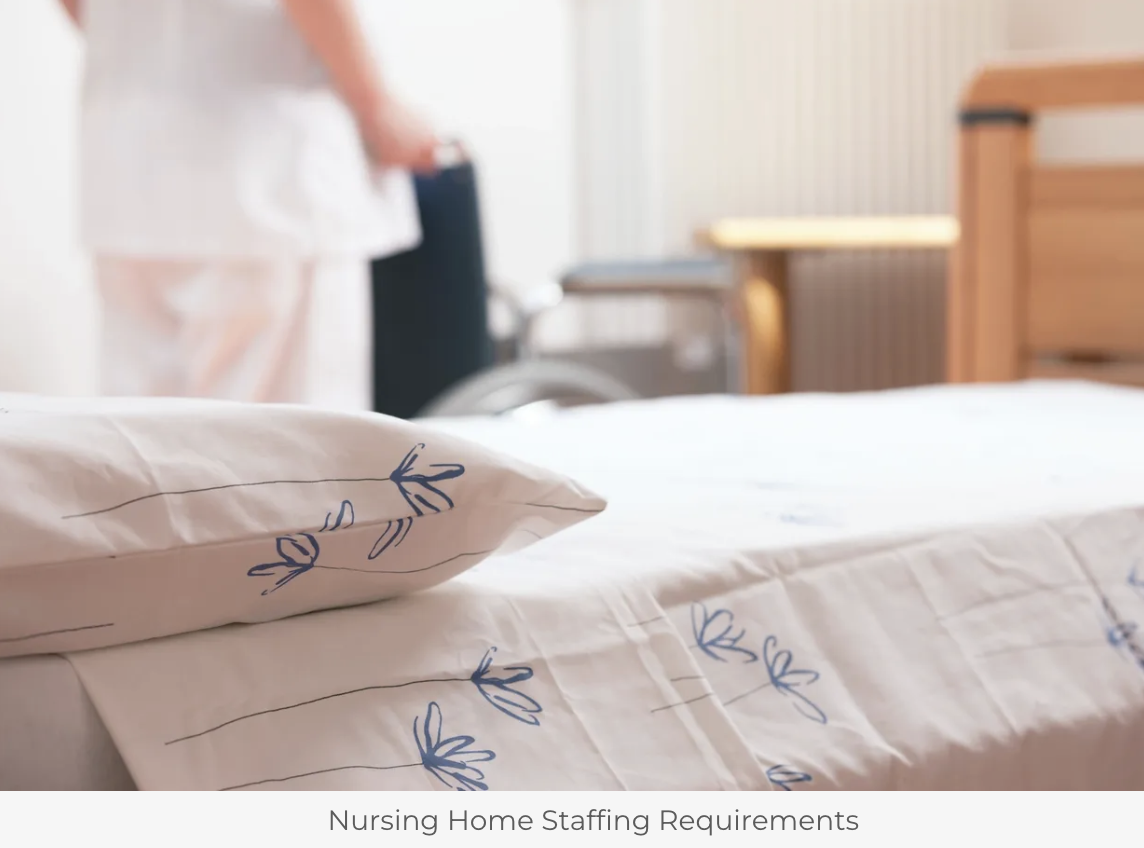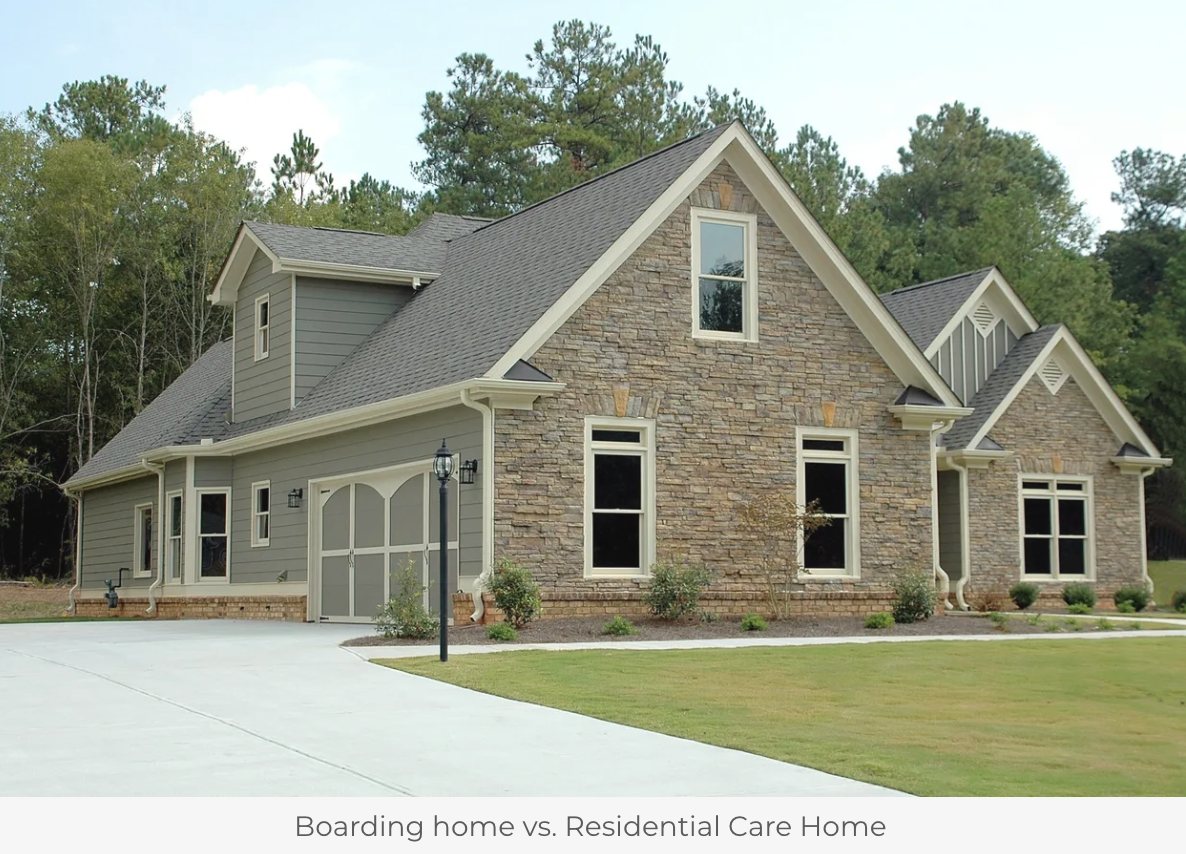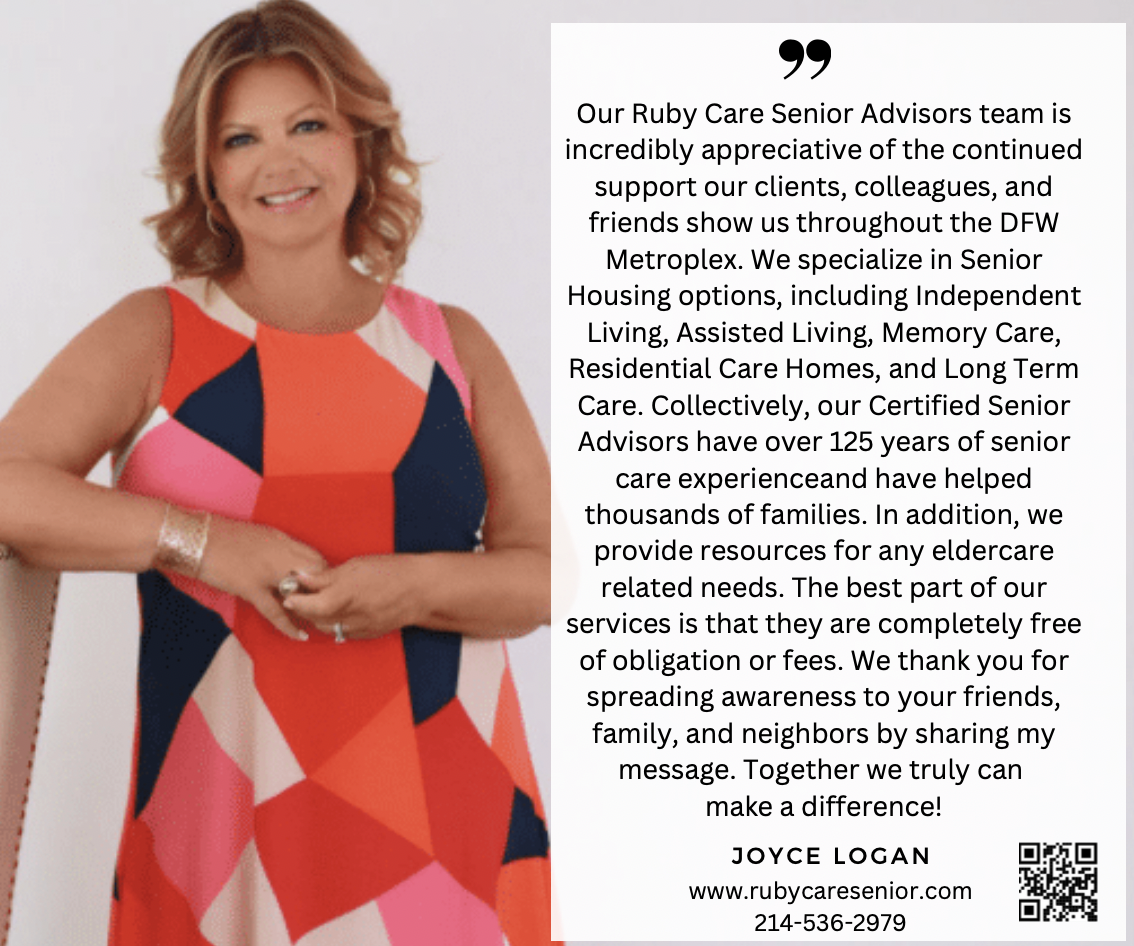About Ruby Care Senior Living Advisors
When Its Time for Senior Living, We Help You Find the Perfect Community for You! With over 900 senior living options in the DFW area, Ruby Care helps families make informed decisions. We provide complimentary assistance to find the most appropriate living community including Indepenent Living, Assisted Living, Residential Care Homes, Memory Care & Nursing Home.
Our Experience
If you've been searching for senior housing for you or your loved one, you know there are hundreds of senior living communities in the Dallas/Fort Worth area. Let Ruby Care help you. We do the legwork at no cost to you and help you find the place that is perfect for you and your family.
Our professionals are well-known in the communities they serve. In order to help you best, they network with health care providers, such as home health, hospice, rehabilitation facilities, hospitals, physicians and other senior service providers.
Collectively, our team has over 50 years of experience in healthcare and we are trained to listen to your needs so that we can work to find the best options for you...at no cost!
Why Us?
We know this can be a stressful time for you as you choose your next home. When you work with us, you will be assigned a Senior Living Advisor (SLA) who knows the community and has first-hand knowledge of the communities you are considering. Your SLA will meet with you in person and will listen to your wishes, wants and needs in order to help guide your next steps. Your SLA will also help you with senior living community tours and preparation to help guide you through the selection process. We serve as your advocate and help make this a smooth, seamless transition. Once you have selected a community, we continue to follow up for at least the next thirty days to make sure things are going well and there are no outstanding concerns.
possibilities. placement. peace of mind.
See More
Videos
Continue Your Search! Explore More Local Options.
Start SearchingLet’s engage and get educated!
Browse through thousands of expert articles in over 100 different categories.
Browse Now